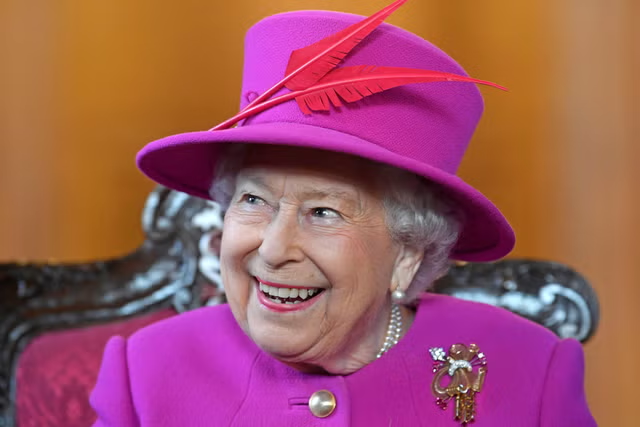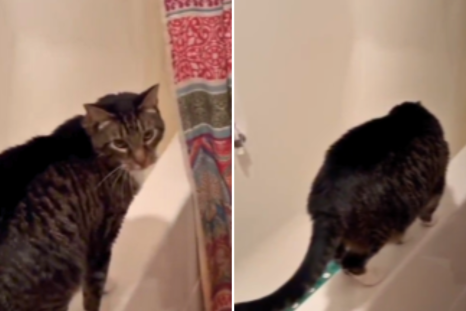It was a split-second decision that changed the course of Joan Hannington’s life. Working late one evening at a high-end jewellery store in central London, she found herself standing in front of an open safe. She opened an envelope and shook a handful of loose, flawless diamonds into her palm. She picked one up and swallowed it. Then she swallowed the rest.
What followed would define her life – or as much as we can ever know about it. Hannington became Britain’s most notorious diamond thief, stealing millions of pounds worth of jewels during her almost 20-year crime spree (her haul from that first day alone was worth £800,000).
Now, The Godmother, as she was known, is the subject of a major new ITV drama, Joan, starring Game of Thrones’ Sophie Turner as the luxuriantly fur-coated, Ferrari-driving thief, looking like a Dynasty character transported to a council flat in Tufnell Park, North London.
At one stage, she owned 2,000 pairs of shoes. “I would say in the morning: ‘Let’s go to New York!’ By lunchtime, we would be sitting in first-class seats, sipping champagne, with £20,000 of cash lining our pockets,” she has said.
The drama is fictionalised, with several names and key events altered – not only for dramatic purposes, but to conceal the specifics of Hannington’s crimes, as she is still alive. But the life that inspired the show is every bit as riveting as what’s portrayed on-screen.
When we first meet Turner’s Joan, we’re catapulted instantly into the world of contradictions she inhabited. In a lavish hotel room, she sits applying immaculate makeup in front of a mirror and trying on huge diamond rings from a heart-shaped case of cash. But her back, which faces the camera, is meshed with angry scars, a stark hint at the darkness of her past.
“You’ve got this damage and trauma and raw, visceral heartache pumping out of her story,” says Anna Symon, who wrote the series. “But at the same time, you’ve got a woman who is walking down the street saying, ‘I know every man wants to f*** me because I’m beautiful. And I’m going to pull off my crimes by taking advantage of that.’”
Joan O’Leary was born in 1957 and brought up in abject poverty in London’s East End, the last of six children to Irish parents Richard and Josephine O’Leary. They spent all the money they had on alcohol, while the children were beaten sadistically with belts and sticks and denied food. At 13, she ran away.
At 17, after becoming pregnant, she married her first husband, Ray Pavey, a criminal who was as violent as her father had been. Their daughter Debbie was born in 1974. In moving scenes in episode one, we see Joan reluctantly leave the little girl – renamed Kelly in the drama – with social services, hoping they’ll look after her temporarily.
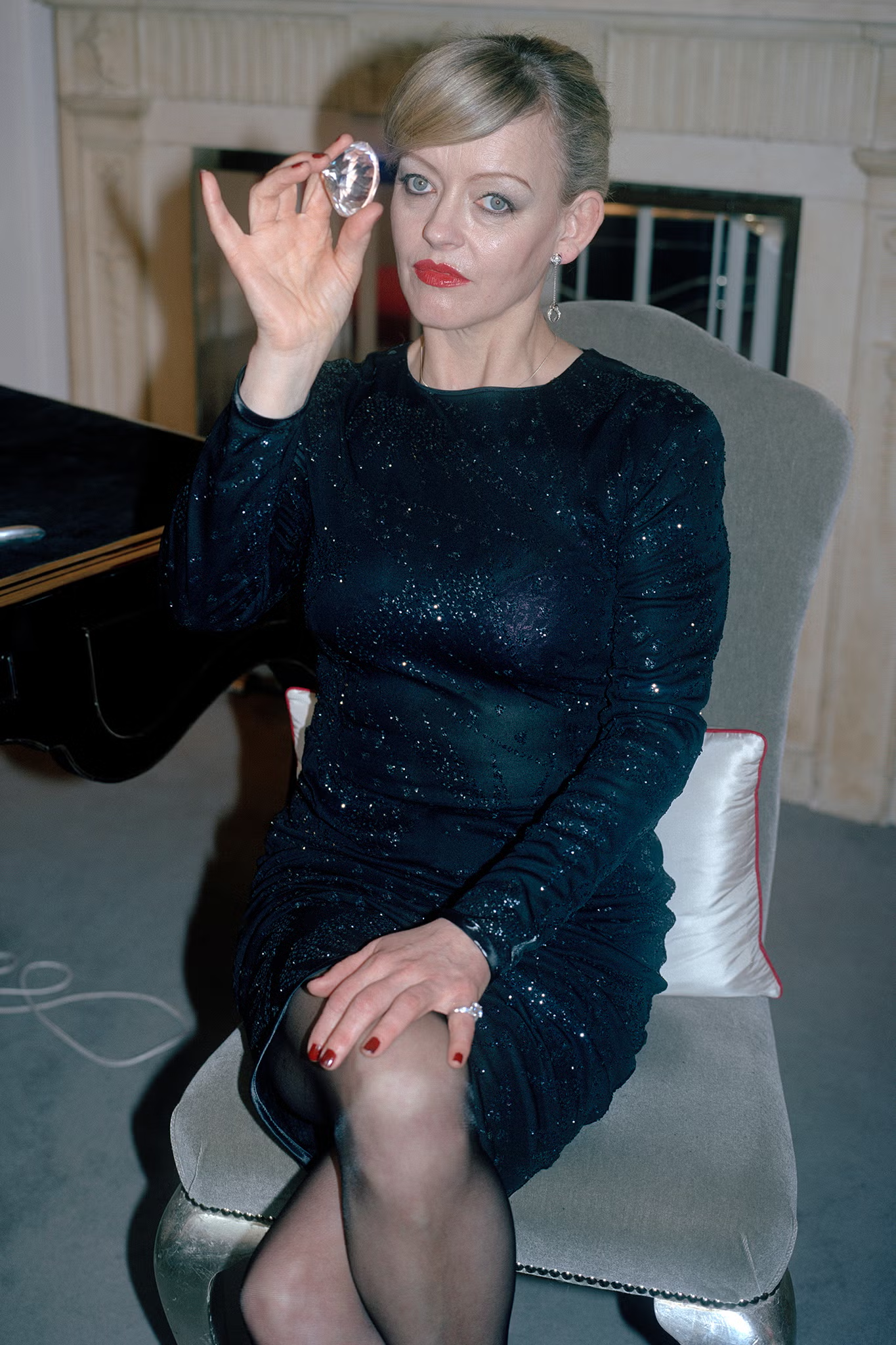
In fact, despite Hannington’s desperate efforts, her daughter remained with her well-off foster parents after Hannington was sentenced to her first stretch in Holloway prison for stealing a car to go visit her.
She took the job at a jewellers in a bid to make a respectable life, but, faced with the envelope of diamonds, she acted on impulse, swallowing them. She couldn’t read or write properly and life had dealt her a succession of brutal blows; here was a glittering glimpse at an alternative path. When nature took its course, she sterilised the jewels in a bowl of gin. Remarkably, they were never missed.
“I just saw those diamonds,” she recalled in a 2004 interview. “And I saw a flat and some money and getting Debbie back. And then, after a while, when it became obvious I wasn’t going to get her back, I just thought, f*** it, I’m going to have a brilliant life, then.”
For almost two decades, Hannington swallowed diamonds and got away with it. She’d stay in the best hotels, such as the Savoy and the Dorchester, and pretend to be a wealthy American tourist, wearing expensive clothing and a series of wigs as a disguise.
She’d try on a ring in a jewellers, then have a cheap but convincing copy made before going back to the shop, switching them, and swallowing the real one, flirting outrageously all the while to ensure the salesman never suspected a thing. Later, burying them in a biscuit tin, she'd sell them on via a fence, often pocketing tens of thousands.

“Swallowing diamonds was my life, my buzz, my drug,” she wrote in her memoir, I Am What I Am, first published in 2004 and re-released last week to tie in with the series.
Although she remained in her council flat, she lived a life of vast wealth and luxury, driving a Ferrari and Jaguar, wearing designer clothes and Cartier jewellery and visiting the hairdressers every day to have her peroxide-blonde hair blowdried.
In her mid-twenties, she met her second husband, Donald Thomas Hannington, known as Boisie, who was 17 years her senior. He was also an elite criminal, dealing in stolen antiques. The pair enjoyed the high life together with Joan as his junior partner, although to avoid suspicion they remained in her council flat, which was full of his loot. Once, she cleaned a £38,000 painting he was storing with Jif, ruining it completely – but when it came to criminality, she was a quick learner.
Ruth Kenley-LettsShe’s a huge character. She’s very funny, and she doesn’t miss a trick. When she walks into a room it’s like, Joan has arrived
By night, she’d work with Boisie, and by day, she’d go back to stealing diamonds or “kiting”, committing cheque fraud: at one point, the latter earned her another 30-month stint in Holloway prison, where she got into a fight and bit a female guard on the breast. But while her husband evoked fear and respect, the underworld didn’t know what to make of Joan, a woman, playing them at their own game.
“She wasn’t taken seriously by the male criminals in that world, because this was the 1980s,” says Symon. “I found that really interesting, because we all still feel like that in our careers from time to time as women. It’s actually quite relatable.”
She was regarded as a gangster’s moll, despite not being dependent on him.
“I didn’t have to sleep with someone for their money,” she has said. “I had my own money, bought my own cars and fur coats.” But while her husband and his associates revelled in their misdeeds, she had to remain quiet about her own.
Their son Ben was born in 1987; three years later, Boisie died when he blew himself up while setting fire to a building. It was the turning point for Hannington, who decided to give it all up and go straight. Today, she lives alone by the sea with her two dogs and loves wearing second-hand clothes. Her son, Benny Jr, with whom she has a good relationship, lives nearby.
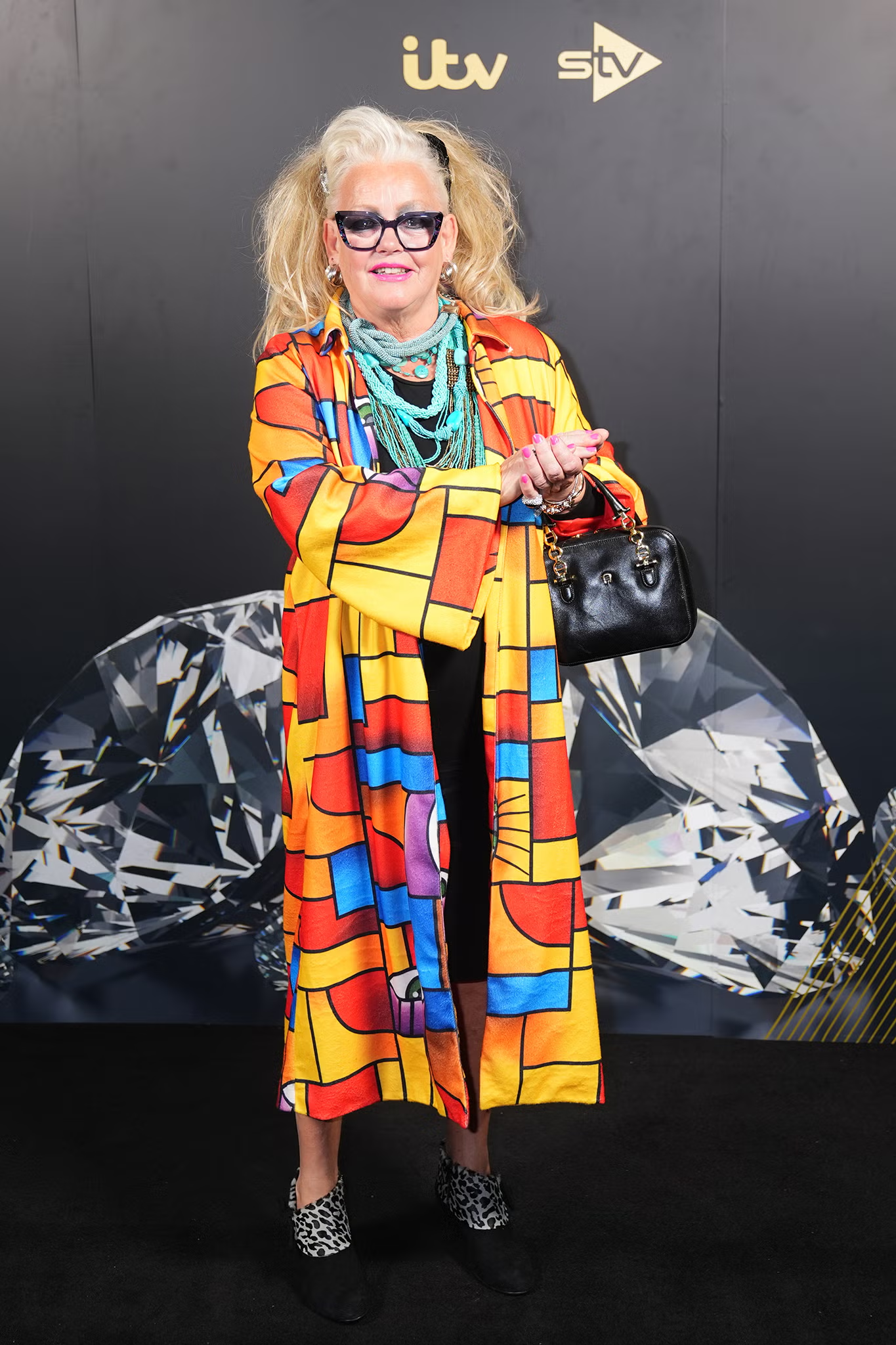
When her memoir was released in 2004, the film rights were immediately snapped up. After reading an article about Hannington on a flight, Gwyneth Paltrow was desperate to play her, but it came to nothing. Then came Symon and producer Ruth Kenley-Letts with their plan to turn her extraordinary life into a series.
Both spent a significant amount of time with Hannington while developing the series. “Whenever you see her, she’s always very dressed up,” says Kenley-Letts. “She loves dressing up, and that’s the same now she’s in her sixties as it was when she was in her twenties.
“She’s a huge character. She’s very funny, and she doesn’t miss a trick. When she walks into a room it’s like, Joan has arrived. She’s really honest about her life, and she’s also somebody with quite a hot temper. So if you get on the wrong side of her, beware. She’s tough!”
At an earlier stage, Symon had shown Hannington a picture of Turner, whom they were pursuing for the part. “She took a look and went, ‘Well, she’s pretty, but she’s not as pretty as I was.’”
“One of the things she’s very particular about is punctuality,” adds Kenley-Letts. “When I took her to meet our lead actors, Frank Dillane and Sophie Turner, for the first time, we jumped in a cab and she said to me, ‘If they’re not on time, I’m not hanging around. I’m walking out.’ And she would have done it.”
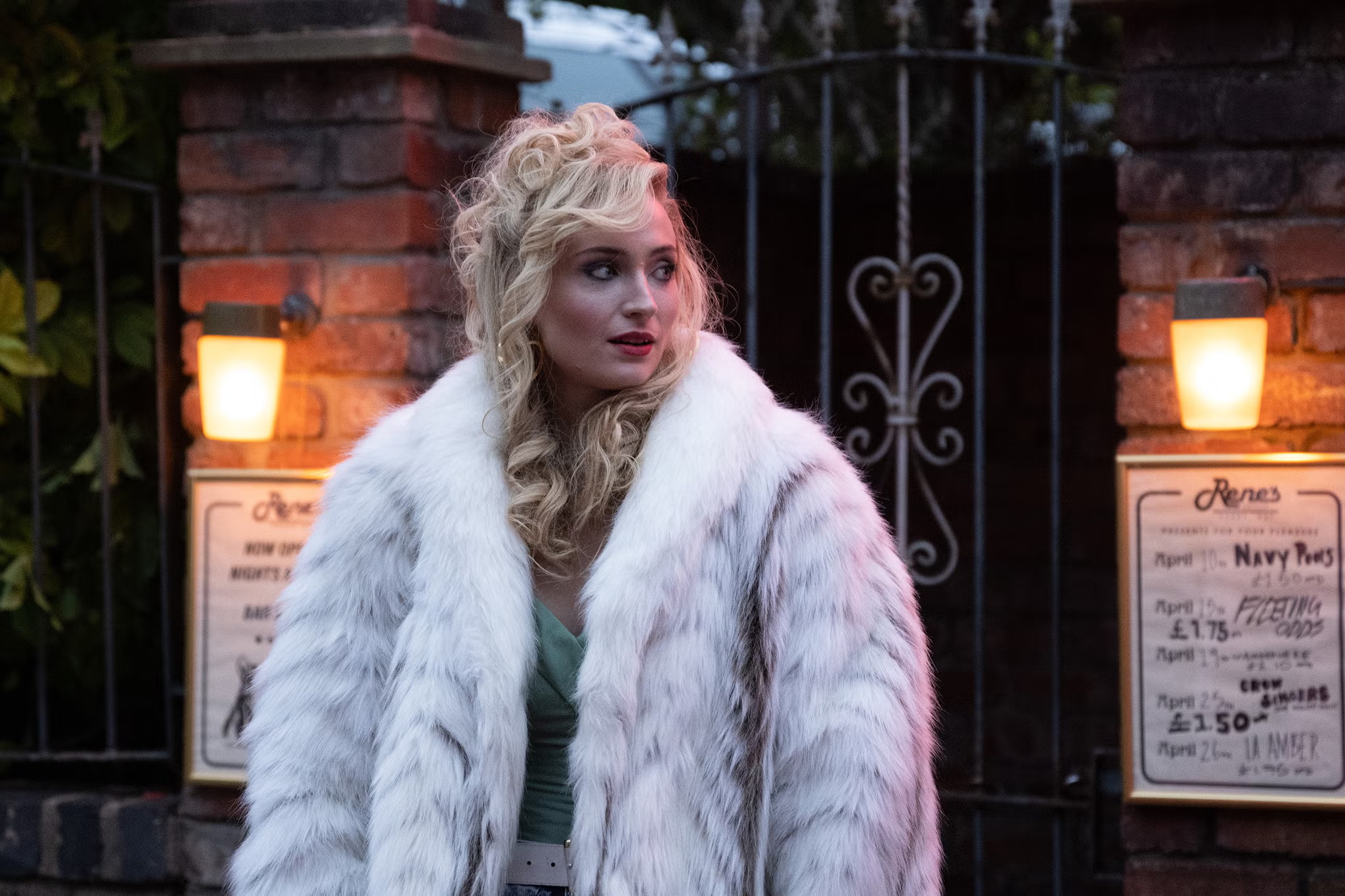
The pair had to work hard to gain Hannington’s trust through the process; she was understandably wary, having been let down previously by big promises of Hollywood films.
They read all the scripts to her to ensure she was happy. “I’d say 95 per cent of the time, she’d say, ‘Oh my God, Anna, that’s exactly what I would have said,’” says Symon. “Occasionally she’d say, ‘Oh no. I wouldn’t have said that.’ Then we’d say, ‘What would you have said, Joan?’”
What does she hope viewers will take from the drama about this reckless, hardened, smart, resourceful woman who refused to be a victim, despite everything she endured? “I really want people to be on Joan’s side,” says Symon. “To see that she made a lot of terrible choices, but because of where she’d come from, and that she lived by her own morals and that within that code, she was trying the very best she could.”
Additional reporting Zoe Beaty
‘Joan starts on ITV’ on Sunday, 29 September at 9pm
Disclaimer: The copyright of this article belongs to the original author. Reposting this article is solely for the purpose of information dissemination and does not constitute any investment advice. If there is any infringement, please contact us immediately. We will make corrections or deletions as necessary. Thank you.


